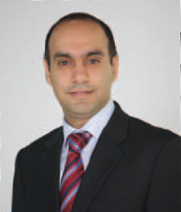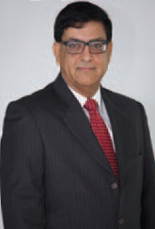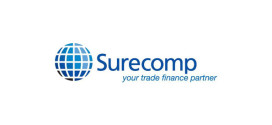The ability to use ‘soft market’ time to prepare for the next big business cycle is what makes leaders in the banking industry stand out from the rest. SUKIRAT KOCHAR and MANINDER BHANDARI explain
All industries go through ups and downs and the banking industry is no exception. However, what differentiates the leaders in this business from the rest is their ability to prepare their organisations, during a soft market, for the next big business cycle.
They invest in improving their business processes and implementing better systems during those times to empower their users and move their business to the next level. They also invest their employees’ valuable time in implementing/upgrading systems while business volumes are low. In this way, they are prepared for the next big business cycle and in a position to handle more business, with better customer service, at a lower cost.
Trade volumes in 2011 have grown marginally compared to last year. However, the overall business environment is still going through some tough times since the 2008 US subprime crisis followed by unrest in the MENA region and now the eurozone crisis. These are exceptional times and one needs to make some exceptional calls during this time in order to succeed and move the business to the next level.
Challenges for trade services in banks
– Customer service – customers are not only expecting shorter SLAs but more transparency during the entire process and instant access to a wide range of information
– Cost – volume increase needs to be met without any substantial cost increase either in the way of hiring people for processing or investing in technology. However, all good technology platforms require heavy capital investment
– Technology – A number of banks lack a single comprehensive end-to-end trade platform that includes a customer portal (offering Straight Through Processing), a product configurator (offering flexibility to launch new products quickly) and a solid trade processing engine at the backend.
Role of technology
In an environment where business volumes are not growing much the only way banks can grow their business is by winning clients away from their competitors. Some of the key factors that will help them achieve this are better customer service and availability of products that are the need of the hour at the right price”. Technology can play a very key role in enabling a bank to provide all the above services and really help differentiate themselves from others.
Heavy capital investment has been a prohibitory factor for many banks to upgrade their technology platforms but there are newer models available in the market today that can enable them to achieve their objectives without any upfront capital investment through the “SaaS” model.
What is the SaaS model?
SaaS stands for Software as a Service.
Traditionally, software providers have been selling a licence of their trade services application to the bank and charging separately for other services such as implementation, customisation etc. The banks install the software in their premise and pay most of the fee before they really start using the software in production mode.
Apart from the software, the bank also needs to procure the requisite hardware (servers etc.), invest in disaster recovery (DR) sites, procure database licenses, other supporting software, dedicate people to manage the hardware, application etc. Basically, the bank’s 100 per cent capital investment on this project is done even before they start deriving any benefit from the application.
In the SaaS model, the software providers host the trade services application at a particular location (which could be the bank’s premises) and the application is pre-packaged with the basic set-ups readily available so the client can subscribe to the software rather than buying it and, after a quick deployment cycle, they can start using it in production mode.
Customers can then begin use of the front end while the bank deploys the best of processing, to the benefit of all, very quickly.
Variations of the SaaS model
The SaaS model is available in the following formats:
– On demand – software is hosted at the software provider location and the bank accesses remotely
– On premise – software is hosted at the bank’s location
– Hosted model – software is hosted at a third party data centre mutually agreed by the bank and the software provider.
Based upon each bank’s preference, security guidelines and their country’s regulatory requirements, they can opt for any format of the SaaS model. The cost benefits may vary slightly based upon the chosen format but the basic essence of the SaaS model is still preserved and the cost savings and operational efficiency benefits can be tremendous.
Benefits of the strategy
– SaaS implementation helps in standardisation of trade processes across the bank
– Rapid implementation leads to accelerated time-to-market and benefits realisation
– Helps to reduce TAT (turnaround time) and meet client SLAs consistently
– Reduces processing time without adding FTEs
– Capex to opex: converts capital expenditure to operating expenditure
– Risk of a failed implementation is minimised as the monthly payments start only post going live
– The volume-based tiered pricing in the SaaS model facilitates lower cost per transaction as volumes increase
– Enables 24X7 availability of the application in a highly secure environment to all stakeholders from any location
– Technology and application obsolescence is eliminated at the bank
– Implementation of such an application can also help banks to outsource the processing work to a remote location, which can have tremendous costs savings.
Experience of enterprise clients using SaaS mode
Challenges and key success factors
– Flexibility and configurability – Probably the most important factor that determines the success of the SaaS model is the flexibility offered by the application through tools and set-ups such as product configurator, fees and charges set-up etc (referred to as configuration) versus making code level changes (referred to as customisation) to meet the business requirements
– Data security – this has been a major concern for many in the industry and has inhibited the adoption of the SaaS model. Three main things need to be validated from the service provider from the security aspect: a) Review of data security policies at the data centre. b) Security features of the underlying application. c) Secure connectivity from bank to the data centre.
Managing all these aspects is not very difficult and the service providers need to discuss these aspects in detail with their clients
– Product Architecture – The SaaS model can be truly successful only when the underlying product supports multi-tenancy architecture that helps to maintain a single instance of the application across multiple clients
– Usage of customer portals – incentivise your corporate customers to use the portals for
application submission, tracking etc consistently by providing them shorter SLAs versus paper drop. This will reduce a lot of redundant work at the bank and make the operation very efficient – Reference customers – ensure that software providers have a proven application by meeting and interacting with their current customers using the same application both globally and in the region – Alignment of key stakeholders – A project of this nature can only become a huge success if the three key teams (ie business, IT and processing) within the bank are aligned upfront to the vision and the goals of this project and remain united throughout the project along with the service provider.
As in most cases, adopting new strategies brings new challenges as well as new opportunities at the same time. However, if executed well this model can be really beneficial especially for organisations that want to use technology as a key differentiator for them in the market. n
Sukirat Kochar is the chief operating officer of Encore Solutions. He has more than 14 years experience in the technology industry focused on the banking, financial services and insurance (BFSI) verticals. His area of expertise has been in product development, transaction processing, business process outsourcing, client relationship management, programme management and strategic business development. Before joining Encore, Sukirat was vice president and business head of 3i Infotech Inc. North America. After a very successful tenure in Middle East and Africa, he was instrumental in setting up the company’s US operations. He was a key member of the Business Solutions team for the BPO and transaction processing business and worked with clients such as JP Morgan Chase, American Express, Wells Fargo and Prudential. He is available on sukirat.kochar@encoresolutions.org
Maninder Bhandari, managing director, The Encore Group, has been a career banker for more than 27 years at HSBC, ABN AMRO, Emirates NBD and The Bank of New York Mellon in senior positions at the wholesale, retail, acquisition and Islamic banking areas located in Asia/Pacific, Middle East/Africa, Latin America/Caribbean and North America. Before he became the founding partner of the Encore Group, he was the managing director (treasury services) for Middle East and Africa for the Bank of New York Mellon. He is available on maninder.bhandari@encoresolutions.org .
Founded by Hari Padmanabhan, Maninder Bhandari and Sri Joshi, The Encore Group consists of companies lead by experienced entrepreneurs specialising in end-to-end IT-enabled solutions. They invite companies to empower their businesses with BlackBerry® and mobile solutions from Etisalat.
 Cash And Trade Magazine For Cash and Trade professionals in the Middle East
Cash And Trade Magazine For Cash and Trade professionals in the Middle East







One comment
Pingback: Preparing for the challenges | Encore
Pingback: Preparing for the challenges | Encore